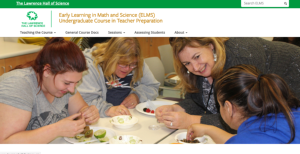Theme: US Court System
Back to Top
|
 |
|
Oral Argument 2.0
|
Social studies |
|
How would a perfectly-scripted answer to a question posed by the Supreme Court sound? Oral Argument 2.0 has some suggestions. Using cases from the October 2019 Term (argued throughout 2019 and 2020), Oral Argument 2.0 highlights key questions and then provides context, commentary, and suggested answers. Featured cases are highlighted on the Home page with a general content label (for example, "employment law" or "criminal procedure"). Clicking on a case, readers will find background information (including case facts and issues), as well as some "key questions from oral argument," accompanied by a contributor's answer. For example, in Barr v. American Association of Political Consultants Inc., a case about First Amendment rights and automated debt collector calls, Justice Kagan presents a hypothetical. Eugene Volokh, Professor of Law at UCLA with a focus on First Amendment law, writes his suggested reply, relying on some key case law from his area of expertise. Not only do these questions and answers provide legal insights, but they also display good advocacy techniques that can apply in broader contexts. Many law professors, students, and practitioners contribute to the project, and it receives further support from Cornell Law's Legal Information Institute (LII), Justia, and the Oyez Project. [EMB] |
|





|
|
 |
|
Tribal Court Clearinghouse: Tribal Law
|
Social studies |
|
Founded in 1997, the Tribal Court Clearinghouse hosts an abundance of resources on tribal courts and laws. As the resource notes, "tribes have always had, and continue to retain, the sovereign authority to establish and operate their own tribal justice systems." The Clearinghouse's Tribal Law hub provides ten topical sections to understand tribal court systems. The Tribal Courts section, the first option listed, is a great place to start. It begins with some background information on the establishment of sovereign authority under the Indian Reorganization Act. Additionally, this section lists all United States' Tribal Courts (cataloged by state). The remaining nine sections cover Tribal constitutions, codes, and case law, pertinent research articles, and other key actors (including federal, state, and law enforcement officials). Those looking for further information on tribal court systems will want to explore the other information hubs highlighted at the top of the site: Federal Law, State Law, Topics, Program Resources, and Native Resources. The Tribal Law and Policy Institute publishes the Tribal Court Clearinghouse, and links to other resources from the organization are provided on the right-hand panel of the website's home page. [EMB] |
|





|
|
 |
|
AnyLaw
|
Social studies |
|
What would a court system be without its cases? Promising "free legal research for anyone, anytime, anywhere," AnyLaw is the perfect platform for introducing aspiring legal scholars and researchers to case law. Entrepreneur Steve Tover launched this startup, and it fills a unique need. While many legal databases come with steep fees, AnyLaw makes a wealth of case law available to all. For readers with a case in mind, the search bar on the landing page provides easy access. Those needing more direction will find several tools to tailor search results. The "Select Courts" button allows readers to narrow by a state court or federal circuit, and the menu in the top-right corner provides additional browsing features. For example, visitors can search by topic, including: "administrative rulings," "civil rights," and "health care law." After finding a case, the dropdown boxes at the top of the page note related cases. This way, users can quickly find other relevant cases and research materials. Readers with a free account can click the star icon in the top-left corner to save cases for future browsing. The button just below lets users download, save, and print the documents as a PDF. [EMB] |
|





|
|
 |
|
 |
|
Oyez! Oyez! Oyez!: Simulating the Supreme Court
|
Social studies |
|
Regular readers are no stranger to EDSITEment's work, and perhaps have used one of their previously featured lesson plans in their classroom (the latest in the 04-03-2020 Scout Report). As the name suggests, EDSITEMENT lesson "Oyez! Oyez! Oyez!: Simulating the Supreme Court" focuses on the "Constitutional responsibilities and powers of the Supreme Court." Created in 2019 by Kathryn Milschewski, this lesson plan is particularly relevant to high school civics and history teachers. The curriculum is designed to introduce students to the Supreme Court's role in context with the other branches of government and includes guiding questions, four classroom activities, handouts, and reference materials. The first activity introduces students to the Court's purpose and function, while the second and third activities focus on analyzing and arguing court cases (with an emphasis on freedom of speech). Finally, the fourth activity provides materials for a "Supreme Court simulation," where students take on the roles of justices, attorneys, clerks, and more. Teachers looking to create an entire Supreme Court unit may enjoy some of the "related" lesson plans highlighted at the bottom of the page, including "John Marshall, Marbury v. Madison, and Judicial Review." [EMB] |
|





|
|

















